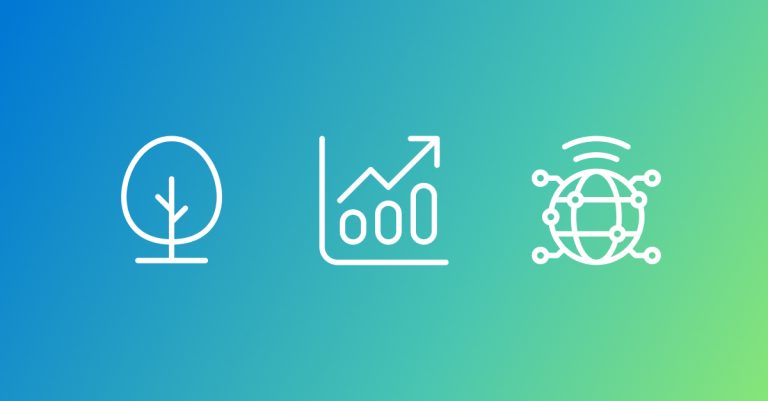
The rise of affordable small-scale renewable energy, like rooftop solar panels, is reshaping energy systems around the world. This shift away from fossil fuel-powered grids creates new opportunities for energy distribution that prioritize decentralized energy ownership and community empowerment. Despite this progress, centralized energy systems still dominate, often failing to provide vulnerable communities with reliable, affordable renewable energy. In response, Microsoft researchers are collaborating with local communities to explore how AI can enable community-scale energy solutions focused on energy availability and equity as well as decarbonization.
AI-powered microgrids support resilient communities
Microgrids, small and localized energy systems, hold promise as a solution to the challenges of centralized energy systems. These microgrids can operate independently from the larger grid, providing participants with resilience and control. Figure 1 shows how these systems integrate renewable energy sources and storage to efficiently manage local energy needs.

AI improves energy reliability by integrating data about energy consumption, market prices, and weather forecasts, necessary when using wind and solar power, which rely on weather conditions. Advanced forecasting predicts renewable energy availability, while AI-driven analytics determine when to generate, store, or sell electricity. This increases efficiency and stabilizes the grid by balancing supply and demand.
Spotlight: Blog post
Eureka: Evaluating and understanding progress in AI
How can we rigorously evaluate and understand state-of-the-art progress in AI? Eureka is an open-source framework for standardizing evaluations of large foundation models, beyond single-score reporting and rankings. Learn more about the extended findings.
When powered by AI, microgrids can also contribute to energy equity. In many rural parts of the US, flat-rate billing models are still common, often leading to unfair pricing. AI-enabled microgrids provide an alternative by allowing communities to pay only for the energy they use. By analyzing consumption patterns, AI can ensure optimized distribution that promotes equitable pricing and access. These systems also improve resilience during crises, enabling communities to manage energy distribution more effectively and reduce reliance on centralized utilities. AI allows microgrids to predict energy demands, identify system vulnerabilities, and recover quickly during outages.
Evaluating AI’s impact on microgrid efficiency and equity
To explore AI’s potential in improving efficiency and equity in energy management, a team of Microsoft researchers collaborated with community organizations on simulations and a case study. They built a tabletop simulator to test whether AI could effectively determine when to generate, store, or sell electricity based on real-time data. The AI model was optimized for resilience and efficiency, using reinforcement learning to control grid and battery processes, enabling microgrids adapt to changing energy conditions and market dynamics.
This simulation used a theoretical model with external data to show how an AI-driven microgrid could autonomously buy and sell energy based on strategic design parameters. By controlling when the battery is charged and discharged based on energy production and consumption patterns, the model maximized efficiency and maintained local power availability. Figure 2 shows the AI-controlled grid’s optimal decisions using open-source data from the California Independent System Operator (CAISO), serving as a proof of concept (PoC) for AI-driven microgrids operating under real-world conditions.

Microsoft researchers, in partnership with community-based organizations Remix: The Soul of Innovation (opens in new tab), Maverick IQ (opens in new tab) and Ayika Solutions (opens in new tab), are designing and implementing an AI-powered microgrid system in West Atlanta. Working closely with the Vicars Community Center (VCC) resilience hub (opens in new tab), they aim to address challenges faced by the community due to rapid development West Atlanta, like many Atlanta neighborhoods, faces rising housing prices and energy costs that disproportionately affect long-time residents. Communities relying on centralized grids are more vulnerable to outages, with slow recovery times, highlighting systemic inequalities in energy distribution.
The VCC resilience hub is tackling these issues by helping to establish a solar microgrid for the West Atlanta Watershed Alliance (opens in new tab) (WAWA) community farm and surrounding neighborhoods. Microsoft researchers and collaborators are integrating AI into the microgrid to achieve energy savings, improve resilience, and create local job opportunities. Figure 3 shows the VCC resilience hub and WAWA community farm powered by the microgrid, highlighting key infrastructure for installing distributed energy resources (DERs).

Project phases
Co-innovation design
Microsoft researchers, architects, and community partners held a participatory design session with state and utility representatives to define the project’s mission and key metrics. The CDC’s Social Vulnerability index informed the site selection, supporting the project’s diversity, equity, and inclusion goals.
Renewables and microgrid siting
A renewable siting survey conducted by community partners identified the VCC as a key resilience hub for solar panel and battery installation.
To deliver these benefits, the site first needed upgrades. Older homes required energy-efficiency improvements, such as electrical upgrades and better insulation, before they could be integrated into the microgrid. As a PoC, the team collaborated with community partners to modernize an older home with inefficient energy consumption. Sensors were installed to track energy usage and environmental conditions (Figure 4).

Students from Morehouse College (opens in new tab) used this data to create a digital twin of the home, which provided actionable insights (Figure 5). The analysis confirmed issues like high radon levels and energy drains from outdated appliances. Guided by these findings, the team upgraded the house into a “smart home” where AI monitors energy and environmental conditions, enabling it to join the microgrid and making it eligible for LEED certification (opens in new tab).

Microgrid simulation phase
To prepare the AI-powered microgrid, Microsoft researchers built a simplified tabletop prototype simulating the setup using real data from the design and siting phases. This prototype demonstrated the control mechanism’s ability to manage DERs—solar panels, batteries, and appliances—and the interface between the microgrid and the larger grid. Figure 6 shows the tabletop model during prototyping.
Figure 7 illustrates the results of this simulation, showing power bought and sold and the battery charge-discharge profile. The AI controller made optimal buying and selling decisions, promoting efficiency and reliability.

Erica Holloman-Hill, director of WAWA, CEO of Ayika Solutions and owner of the PoC home, reflected: “This study helped me understand how our home’s outdated condition affects our quality of life. Upgrading homes like mine could make a significant difference. Thanks to partnerships like this one, controlling and sharing the electricity the community generates is within reach, highlighting the potential of AI-supported technologies like microgrids for communities like ours.”
Building on the simulation’s success, the VCC resilience hub and local organizations are continuing to install solar panels to power the microgrid. AI will play a key role in siting and controlling the system as it expands. Efforts are also underway to establish sustainable financing models and assess homes for modernization to enable broader participation in the microgrid.
AI: A path to equity and resilience
The transition to decentralized microgrids offers new opportunities for energy efficiency, with AI playing a critical role in managing these systems. Yet additional efforts are needed for communities to fully realize these benefits. Residents of aging homes are burdened with outdated wiring, inefficient appliances, and poor insulation—factors that drive up energy costs. Their dependence on centralized grids offers little relief, underscoring the need for community-focused energy solutions.
The West Atlanta project illustrates AI’s potential to create resilient, equitable, community-driven energy systems, paving the way for a more inclusive and sustainable future. Microsoft researchers are continuing to collaborate with local organizations to promote smarter energy management.
For additional details, please review the project report.
Acknowledgements
I would like to thank all the collaborators on these projects: West Atlanta microgrid: Erica L. Holloman-Hill, John Jordan Jr, Markese Bryant. I also want to thank Karin Strauss for reviewing and providing feedback on this blog post; Andalib Samandari, the intern who supported this project; Vaishnavi Ranganathan for helping to brainstorm throughout the project; AI & Society Fellows program for supporting projects in this domain; and Microsoft’s Datacenter Community Affairs team, Jon McKenley and Kelly Lanier Arnold for supporting the project in West Atlanta.



